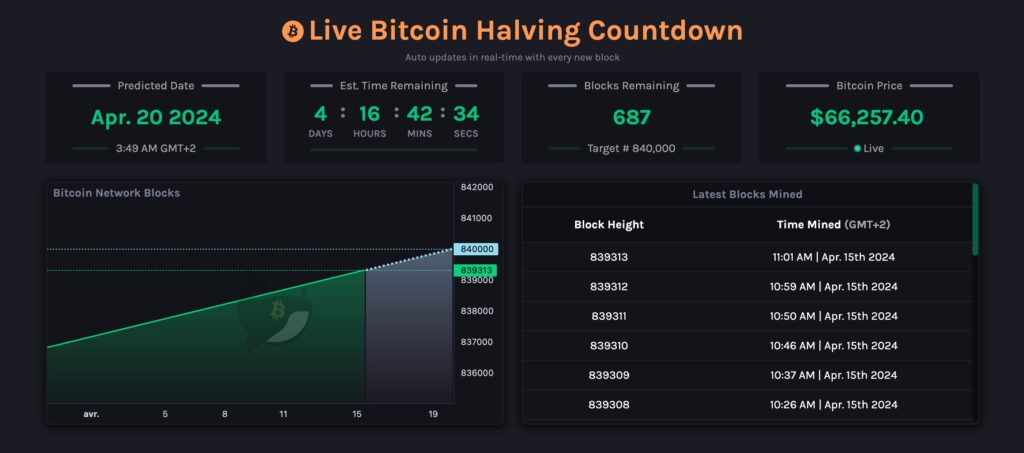The bitcoin halving is getting closer and closer. The event is expected to occur on April 19, but the exact time is still unclear, and none of the online countdowns agree. How is it possible ?
4 days and 15 hours for Binance, 4 days and 13 hours for Cryptoast, 4 days and 16 hours for CoinAcademy, and 4 days and 20 hours for BitPanda… Regarding the date of the next bitcoin halving, no one agrees. However, it is a flagship event, closely scrutinized by the entire crypto community – and despite everything, its exact time remains a mystery for the moment.
The halving refers to the moment when the rewards granted to bitcoin miners are halved: far from discouraging bitcoin owners, the event on the contrary generates a lot of enthusiasm. Since its creation in 2008, bitcoin has experienced 3 halvings, and each time, the price of the cryptocurrency soared shortly after – enough to attract the desire of the entire industry. But as that next reduction draws closer and closer, it’s still impossible to find a consensus time.
Why is it so hard to estimate the bitcoin halving date?
This division by two is written into the bitcoin code, so there are no organizers or people in charge of the event. It happens on its own, without developers or miners — and this is also why the precise date of the event is so difficult to calculate. The bitcoin blockchain is self-sustaining.

Halving occurs every 210,000 blocks. Since a block takes around 10 minutes to mine, it’s easy to know that this split takes place every four years. However, it is very difficult to precisely determine the day and time of this event. This is what we see with all the countdowns available online: no one agrees.
The reason for this is simple: mining is not a very precise activity. In theory, each block takes 10 minutes to be mined — but in reality, miners take more like 12 or 11 minutes. These variations are visible on specialized sites: on BlockExplorer, we can see that block 839309 was mined at 10:37 a.m., 11 minutes after block 839308. We can also see that another block was mined in 4 minutes, and a another in 29 minutes.
These fluctuations are due to the fact that the bitcoin network constantly adapts to the number of connected miners. The more miners, and therefore hashrate (computing power) there are on the network, the harder the equations will be to solve. Conversely, the fewer minors there are, the easier the equations will be. The network adjusts so that the 10 minutes are always more or less respected — but there is always a small margin of error.
As it is difficult to precisely estimate the hashrate and therefore the time needed to mine the next block, the countdowns take averages, which may turn out to be different from each other. However, as the date gets closer, the countdowns should become more and more aligned, until they are completely seamless. In short, we will know the exact time when the event will occur.
If you liked this article, you will like the following: don’t miss them by subscribing to Numerama on Google News.
